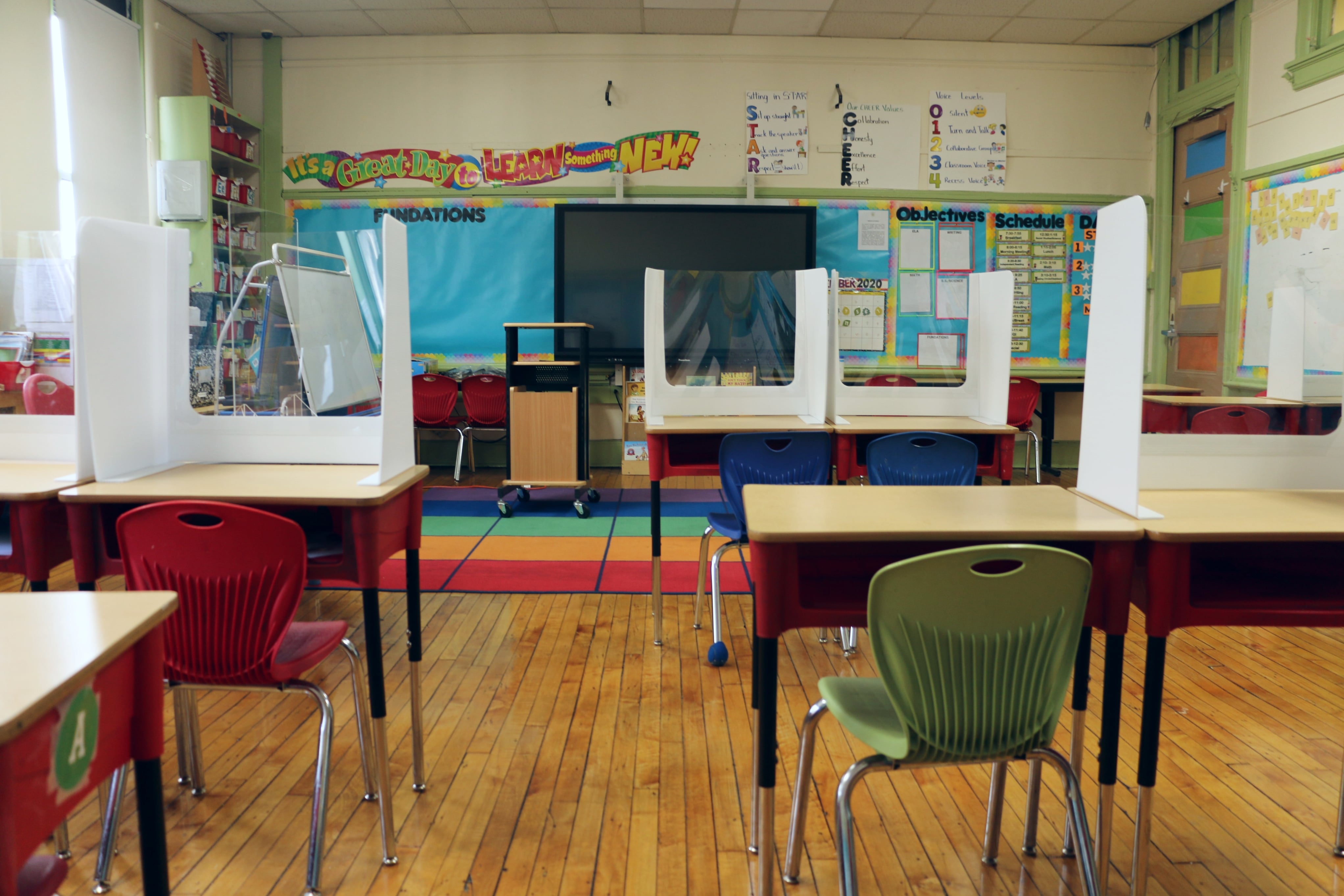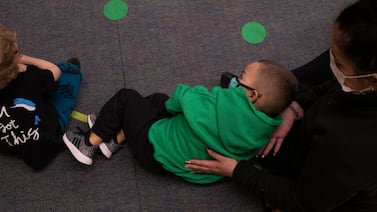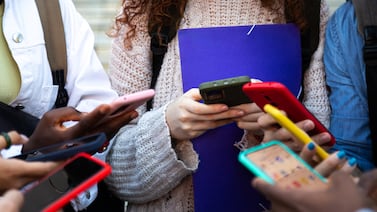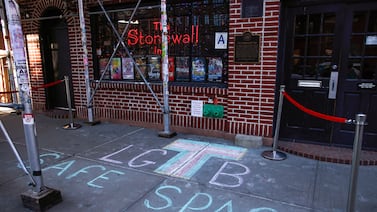It took more than a year, multiple false starts, prodding from elected officials, and meticulous planning. But on Monday, students in New Jersey’s largest school district will finally make the leap from videoing on couches to learning in classrooms.
“It’s like, almost, an awakening,” Superintendent Roger León told NJ Spotlight News this week.
In fact, a limited number of Newark students have already returned to classrooms. Last year the district offered in-person summer school at two sites as a way to rehearse safety procedures, and last month it quietly reopened a school for students with disabilities. In addition, a few charter schools recently resumed in-person learning, including the city’s largest charter school operator, North Star Academy, which reopened schools this week.
Still, Newark Public Schools’ April 12 launch of hybrid learning will be the first time most Newark students have seen the inside of a classroom since the pandemic triggered the jarring shift to remote learning some 13 months ago.
Since then, the district has attempted to reopen school buildings three separate times but backpedaled due to rising coronavirus cases, teachers union resistance, and delays in updating school ventilation systems. As remote learning dragged on, concerns about the toll on student learning and mental health have deepened, and both President Joe Biden and Gov. Phil Murphy have urged all schools to resume face-to-face learning.
This month’s shift to part-time in-person learning is the result of painstaking preparation. The district has stocked up on facemasks and cleaning supplies, set up a staff vaccination site and weekly COVID-19 testing, and plotted every socially distanced step that students will take inside school buildings.
Yet after all the time away from school, and all the work to bring students back, most Newark families intend to keep their children home. That’s little surprise in a city hit especially hard by the pandemic, where just 8% of residents, who are mostly Black and Hispanic, have been fully vaccinated — compared with 23% of New Jersey residents.
Still, thousands of parents will be dropping their children off at school this month. ldemar Vazquez, who has spent $125 a week on child care for her daughter, will be sending the fourth-grader back to Marion P. Thomas Charter School.
“She cannot wait,” Vazquez said. “She’s doing great, but there’s nothing like real learning — in-person learning.”
As the much-anticipated moment arrives, here’s everything you need to know about schools reopening in Newark.
When will students return?
The first group of Newark Public Schools students return to classrooms Monday and Tuesday, April 12 and 13. They will be dismissed earlier than usual, around 1:30 p.m., and expected to do online work at home.
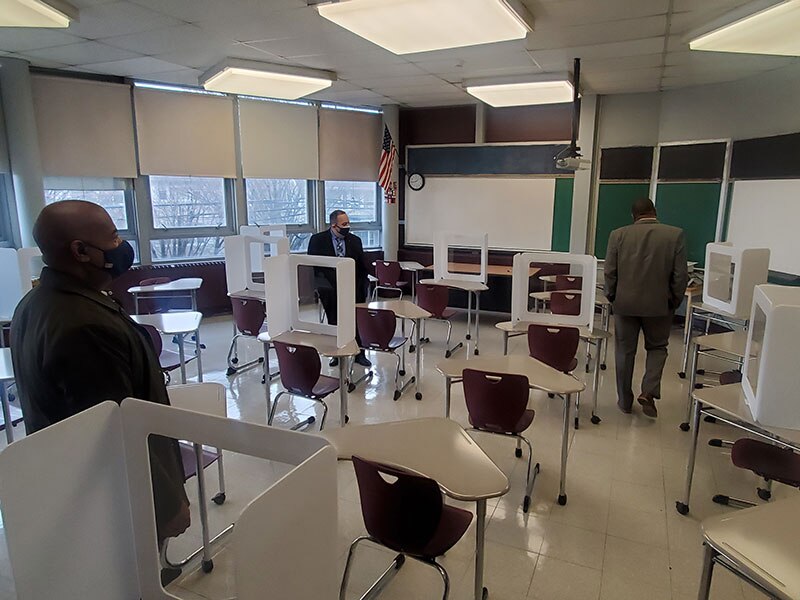
The next cohort will show up Thursday and Friday, and all students will be remote on Wednesdays.
While most students whose families opted for hybrid learning will learn in person two days a week and remotely three days, some high schools will bring students back four days per week.
Charter schools, which enroll about 35% of Newark’s public school students, are on different schedules.
Several charter schools — including Achieve, KIPP New Jersey, LEAD, Marion P. Thomas, Philip’s Academy, Robert Treat Academy — will reopen classrooms for some students on April 19. Roseville Community Charter School reopens April 12. And in-person learning already started on March 15 at Discovery Charter School and on April 7 at North Star Academy.
How many students will return?
About 14,500 district students are expected to return to classrooms part-time, based on the number of families who opted for hybrid learning. That represents about 40% of Newark Public Schools’ roughly 36,000 students.
Families were more likely to send younger children back, with only 28% of high schoolers expected to return. Across all grades, the remaining 60% of students will stay fully remote.
Nélida Figueroa said she worried how her daughter would handle the sudden transition back to in-person learning and wearing a mask all day.
“It would be stressful on her,” said Figueroa, who chose not to send her daughter back to her fourth-grade classroom this spring. “The teachers are going to be on edge.”
The percentages are similar at several charter schools that Chalkbeat contacted, with some 35% to 45% of students slated to return. Those students will learn in person two to four days per week, depending on the school.
One exception is KIPP New Jersey, where only about 20% of students are expected back. Officials said they identified students who would benefit most from in-person learning, including those with attendance, mental health, or academic challenges. They will learn in person four days a week.
“Should community spread decrease and vaccination rates increase, or if we receive increased demand from families, we are prepared to offer more students in-person instruction,” Joanna Belcher, executive director of KIPP’s Newark schools, said in an email.
What about teachers?
Nearly 75% of district teachers are expected to return to their classrooms, officials said.
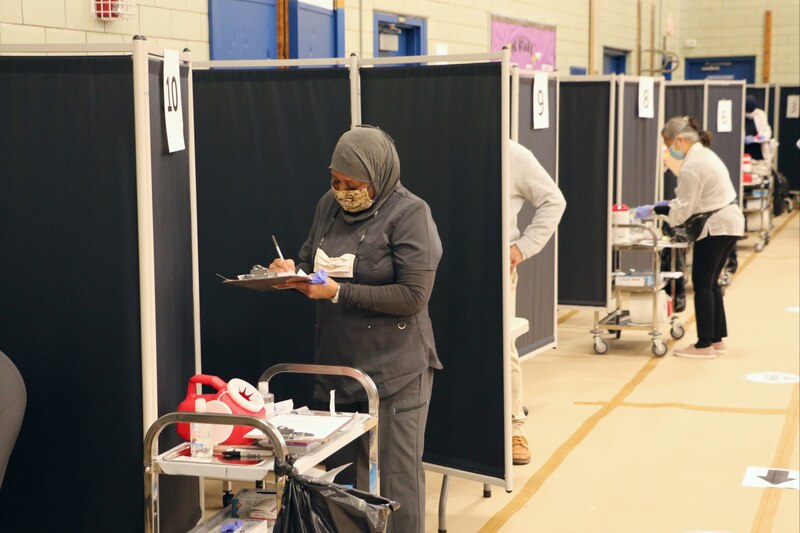
Teachers were ordered to return unless they had an approved exemption. Some schools plan to offer childcare for staffers with young children.
While the district is not requiring employees to get vaccinated against COVID-19, an estimated 70% or more of returning educators have received at least one vaccine dose, said Newark Teachers Union President John Abeigon, citing survey data. Teachers also were given time to inspect their classrooms for cleanliness, protective gear, and working Wi-Fi, he added.
“Regardless of how we feel, we’re going to put that aside and we’re going to return with bells on for our kids,” he said Friday.
What safety measures are in place?
Nearly every aspect of school has been reconfigured to reduce the risk of coronavirus infections.
Let’s start with safety procedures.
First, families will be asked to check children daily for any COVID-19 symptoms using a mobile phone app. On campus, students will complete a multistep entry process that involves a temperature check, and hand and shoe sanitizing.
Once inside, students will head to designated classrooms, where they’ll remain for most of the day. Cafeterias, auditoriums, and gyms are off limits, with most students taking phys ed virtually from their classrooms. They’ll eat breakfast and snacks at their desks, and all but the youngest students will get take-home lunches as they leave. Bathroom use will be limited and water fountains turned off; students must bring their own water bottles.
Next up, safety measures.
Only students and employees are allowed inside schools (no parents or visitors), and everyone must wear masks. Plastic dividers have been installed in main offices, and student desks have been spaced six feet apart and topped with three-sided barriers. Class sizes are not expected to exceed 10 students.
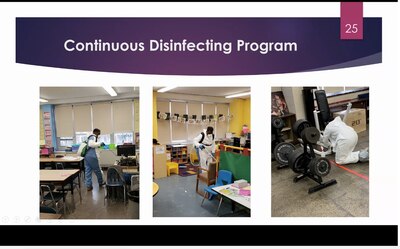
Each classroom will have plenty of hand sanitizer and cleaning supplies, officials said.
The district used federal pandemic-relief money to beef up school ventilation, which experts say is critical for curbing airborne transmission of the virus. Outdated HVAC systems were upgraded, new filters installed, and air purifiers placed in every occupied room, officials said.
“We’ve increased ventilation to the maximum possible extent,” said Steve Morlino, who oversees district facilities.
What about COVID-19 testing?
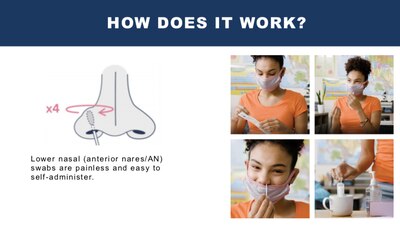
Thanks to new funding from the Biden administration, the district will offer weekly COVID-19 testing for students and staff members who return to schools.
Students will self-administer the tests using nasal swabs, which will be analyzed in batches through a process called pooled testing. If the result is positive, then the entire class must quarantine and each student must get tested individually.
What will learning look like?
Classroom learning will look entirely different than it did pre-pandemic.
Students will spend most of their day in a single classroom. In high school, that means students will log into online classes from their homerooms rather than switching rooms each period, while their homeroom teachers lead virtual classes with different students.
Elementary school students are used to sticking with one teacher for most of the day, but now they won’t leave their rooms even for art class or phys ed. Some schools have even canceled recess and replaced it with outdoor breaks when students can briefly remove their masks. Instead of textbooks and worksheets, students will do classwork on laptops — even in-person students won’t escape those ever-present screens.
Dawn Haynes, a district parent and school board member, said she’s in awe of students who are returning to schools this month despite all the uncertainty about what lies ahead.
“What we’re dealing with inside of this world with this pandemic, it’s a very brave choice for you to go back,” she said at last month’s board meeting. “Your courage is really encouraging.”

